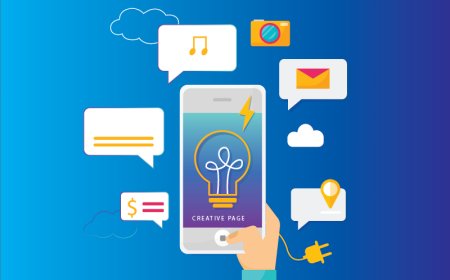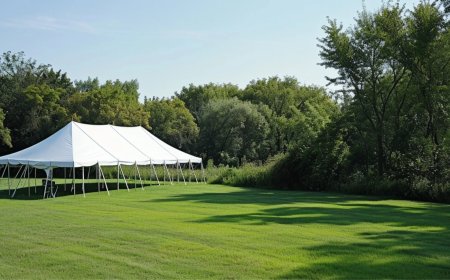Revolutionizing Medical Education: AR Anatomy Apps for Harvard Med School by Boston iOS Developers
Discover how Boston iOS developers and software development companies are transforming anatomy education at Harvard Med School with cutting-edge AR apps.

Learning human anatomy is no easy feat. Medical students often spend countless hours poring over thick textbooks, 3D models, and cadaver labs just to understand how the body fits together. But imagine replacing all of that with an appone that lets you walk around the heart, dive into the lungs, or even peel back layers of muscle and bone with just a tap. Thats exactly whats happening at Harvard Med School thanks to a new generation of AR anatomy learning apps developed by Boston iOS developers.
These apps are not only enhancing how anatomy is taught, but also setting a new gold standard for medical education across the globe.
Why Harvard Med School Needed a Digital Makeover
The Traditional Anatomy Classroom
Harvard Med School is known for its rigorous curriculum. Traditionally, anatomy was taught through lectures, physical models, and dissections. While effective, these methods are time-consuming, expensive, and limited by physical access.
The Digital Generation of Learners
Todays med students are digital natives. They're used to interactive apps, short learning curves, and on-demand information. Harvard recognized this shift and turned to software development companies specializing in educational technology.
Enter AR: Augmented Reality Brings the Body to Life
What AR Anatomy Apps Actually Do
AR, or Augmented Reality, layers digital content over the real world. Using an iPad or even AR glasses, Harvard students can now study a life-sized virtual human body floating in the room. They can walk around it, interact with it, and isolate individual organs or systems.
The Boston iOS Developers Behind the Scenes
The masterminds building these futuristic apps are top-tier Boston iOS developers. Known for their expertise in ARKit (Apples AR framework), these developers created applications that feel smooth, intuitive, and responsivekey factors for something as complex as anatomy learning.
Key Features That Make These AR Apps a Game Changer
Real-Time Interaction
Students can zoom, rotate, and dissect organs in real time. They can even simulate blood flow or explore nerve pathways layer by layer.
On-the-Go Learning
Unlike cadaver labs, which require a physical location and setup, these AR apps work on iPads or AR headsets, meaning learning can happen anywherelibrary, dorm room, or even at a coffee shop.
Collaborative Study Tools
Some of these apps include real-time collaboration features. Two or more students can interact with the same AR model from different devicesmaking group study sessions easier and more productive.
Why Boston Is the Ideal Hub for This Innovation
Boston isnt just home to Harvardits also a hotspot for healthtech innovation. The collaboration between Harvard Med and local software development companies has been seamless.
Proximity Matters
Being close to the campus allowed Boston iOS developers to get regular feedback, test prototypes with real students, and iterate quickly based on hands-on experience.
Tech Meets Academia
Boston has a rare combination of world-class universities and cutting-edge tech firms. This creates the perfect environment for partnerships that push the boundaries of whats possible.
Benefits Beyond the Classroom
Improved Student Outcomes
Early studies show that students using AR apps have better retention, spatial understanding, and test performance. They dont just memorize body partsthey truly understand them.
Accessibility for All
AR apps democratize access to quality education. Even smaller med schools or international programs with limited resources can now offer immersive anatomy lessons, thanks to these scalable apps.
Long-Term Cost Efficiency
While the initial app development may be an investment, these AR tools reduce long-term costs tied to physical models, lab maintenance, and instructional hours.
Challenges Facedand Solved
Even innovation has its bumps. Heres what the teams faced:
Technical Barriers
Creating accurate 3D anatomical models with AR functionality isnt easy. The apps had to be medically precise, visually stunning, and device-optimized.
Solution: The Boston iOS developers worked closely with Harvard professors and 3D medical illustrators to ensure both scientific accuracy and tech performance.
User Adoption
Not every student or teacher is tech-savvy. Adoption couldve been a problem.
Solution: The app was designed with a minimal learning curve. A short tutorial, intuitive icons, and gesture controls made it as easy to use as Instagram.
The Broader Role of Software Development Companies in Medical EdTech
This innovation isn't limited to Harvard. Other software development companies are now looking at how similar models can be applied to surgical training, physiology, and patient education.
AR is not just a trendits a tool thats reshaping how we learn, treat, and understand the human body.
Future Possibilities for AR in Medicine
Whats next? The roadmap includes:
-
Integration with AI for smart anatomical quiz feedback
-
Voice-controlled models for hands-free learning during clinical simulations
-
Multilingual support for global accessibility
-
Haptic feedback to simulate touch and resistance
And all of it can happen right from an app created by talented Boston iOS developers.
Pros and Cons of AR Anatomy Learning Apps
Pros:
-
? Interactive and engaging learning environment
-
? Portable and scalableworks on iPads and AR glasses
-
? Better retention through immersive experiences
-
????? Collaborative learning features
-
? Global accessibility for med schools with fewer resources
Cons:
-
? High initial development cost
-
?? Requires newer devices for optimal AR performance
-
??? May not fully replace cadaver experiencestill supplementary
Entity Tags
-
Harvard Medical School End-user institution using AR learning apps
-
Boston iOS Developers Development team behind the apps
-
ARKit Apples AR development framework
-
Software Development Companies Broader industry enabling MedTech innovation
-
Medical Students Primary users of the application
-
EdTech Industry vertical transforming education through technology
FAQ Schema (Structured)
Q1: What are AR anatomy learning apps?
A: These are educational apps that use Augmented Reality to display 3D models of human anatomy, allowing students to interact with organs, bones, and systems in real time.
Q2: Who developed the AR apps for Harvard Med School?
A: They were developed by highly skilled Boston iOS developers in collaboration with Harvard faculty and top software development companies.
Q3: Can AR apps replace cadaver dissection completely?
A: Not entirely. While they enhance understanding and accessibility, cadaver work still offers unique tactile learning that AR cant fully replicate yet.
Q4: Are these apps available to other schools?
A: Many of these apps are being expanded for licensing or adaptation by other medical institutions around the world.
Q5: Do students need expensive hardware?
A: Most apps are optimized for newer iPads or AR-enabled smartphones. AR glasses offer even more immersive experiences but are not mandatory.
Conclusion: The Human Body, Reimagined
When you mix cutting-edge tech with top-tier medical education, you get more than just flashy visualsyou get a revolution. These AR anatomy apps developed by Boston iOS developers are not just tools, theyre experiences. Experiences that are setting new standards for how medicine is taughtnot just at Harvard, but worldwide.
As more software development companies step into this space, well continue to see technology redefine whats possible in the medical classroomand eventually, in the operating room too.



























